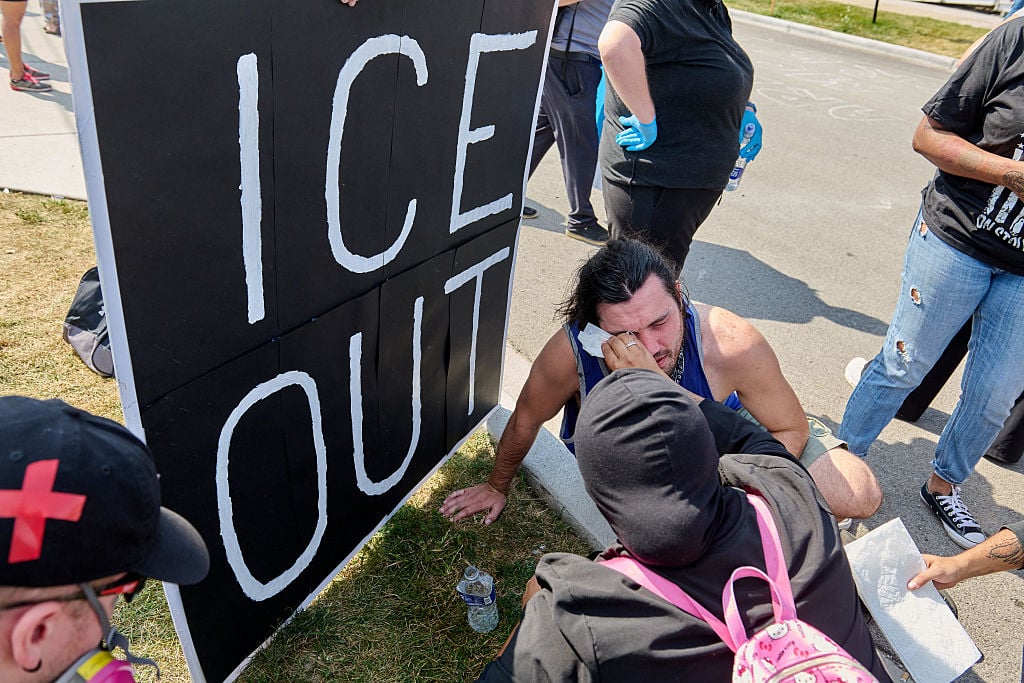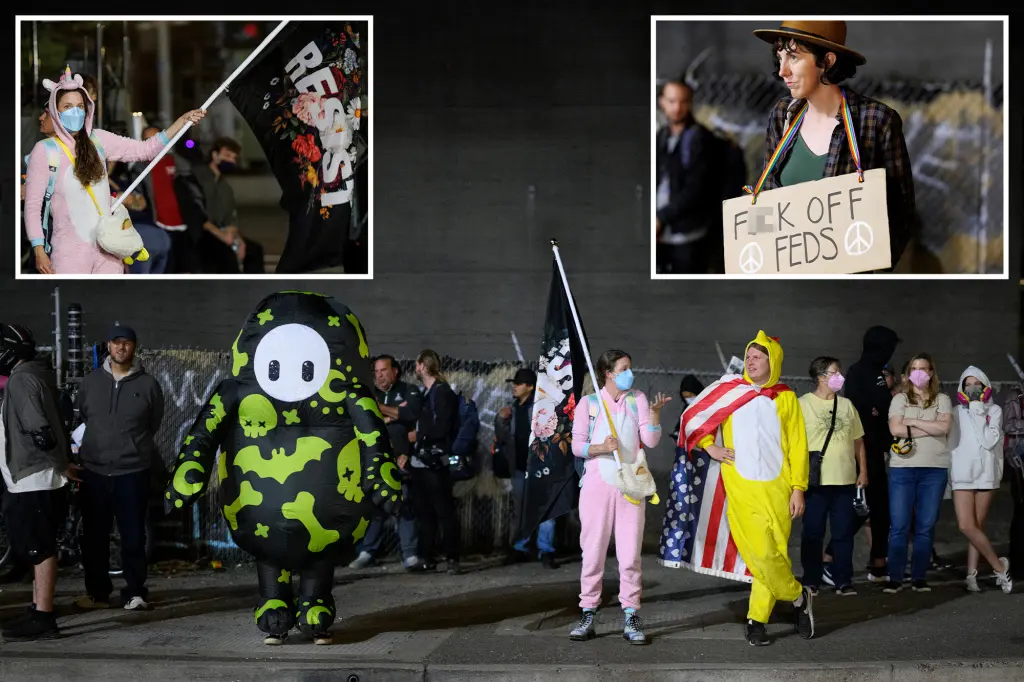By Mike Ludwig
Copyright truthout

As President Donald Trump prepares to further unleash a rapidly expanding surveillance state against the administration’s critics, recent legal struggles from activists who document and protest Trump’s mass deportation campaign may be a preview of what’s to come as part of a broader effort to silence dissent.
Trump made headlines on September 22 with an executive order declaring “Antifa,” short for anti-fascist, a domestic terrorist organization. The move prompted eyerolls from experts who understand that no centralized antifa group exists, while also heightening concerns over Trump’s threats to target opponents over their speech in the wake of the killing of pro-Trump pundit Charlie Kirk.
On September 25, Trump followed the order with a national security memorandum on “countering domestic terrorism” that has received less media attention but could have a far greater impact on progressive civil society. The memorandum directs federal law enforcement to utilize a whole-of-government approach, using multi-agency Joint Terrorism Task Forces, to specifically target “anti-fascism” and leftist social movements as potential sources of political violence.
The memorandum came after multiple members of the administration referenced a baseless conspiracy theory promoted by Trump that claims billionaire philanthropists such as George Soros fund liberal groups to organize riots and assassination attempts. The vast majority of deadly political violence in the U.S. since 2001 has been inspired by white nationalism and other far right ideologies, as opposed to the leftist ideas crudely described in Trump’s memo. Anti-fascists see their work as an organized defense against this violence.
While the memorandum suggests the administration will go after a wide range of people, including “anti-capitalists” and those with “hostility towards those who hold traditional American views on family, religion, and morality,” both documents specifically reference going after activists working to stop Trump’s anti-immigrant agenda. That includes people who track and record Immigration and Customs Enforcement (ICE) activity with the aim of slowing deportations — a move that has long bothered the administration.
Both the memo and the order threaten to expand the surveillance and intimidation of activists that is already underway.
On September 3, Meta sent emails to six people with Instagram accounts informing them that ICE had served the company with a subpoena related to “official, criminal investigation regarding officer safety,” demanding extensive personal information about the users. The accounts, most notably StopIce.net, are part of a broader crowd-sourcing movement that works to publicly identify masked immigration agents who make violent arrests and alert communities about their presence.
On September 2, the Instagram account for StopIce.net shared a video identifying a Border Patrol agent involved in a recent Los Angeles area immigration raid and welcoming him to a “wall of shame.” Meta gave the users just 10 days to challenge the subpoena before their information would be released to the government, according to The Intercept.
Attorneys at the Civil Liberties Defense Center (CLDC) and American Civil Liberties Union (ACLU) are representing the digital activists and filed separate briefs challenging the subpoena. Last week, two federal judges in California issued orders temporarily blocking Meta from releasing personal account information on behalf of two accounts, the Long Beach Rapid Response Network and Long Beach Protests and Events, both of which also shared the “wall of shame” video, before a court hearing in November. Attorneys have interpreted the orders as applying to all six users.
Chip Gibbons, the policy director at Defending Rights & Dissent, said the First Amendment gives people the right to report on law enforcement activities and engage in constitutionally protected speech anonymously online, which websites such as StopIce.net appear to be doing.
“Even without getting into the question of whether ICE can issue an administrative subpoena so far afield from its authorized purpose, it is chilling to see a law enforcement agency try to unmask one of its critics,” Gibbons said in an email. “Such retaliatory actions are exactly why the First Amendment protects anonymous speech in the first place.”
That question of ICE’s investigative role and jurisdiction is central to the civil liberties concerns raised by the subpoena. CLDC attorneys say ICE is attempting to unlawfully expand its law enforcement power. The subpoena issued in this case was not the type served by judges or defense teams as part of a pending legal action. Instead, ICE issued an “administrative subpoena,” a different type that is used by federal agencies in the course of official business.
“For example, the IRS doesn’t need to go to a court and ask a judge for a warrant to conduct a tax investigation, they can just issue a subpoena for information directly because Congress has granted them that authority,” the CLDC legal team wrote in a recent newsletter.
CLDC argues ICE is within its authority to issue administrative subpoenas as part of immigration enforcement efforts or discovery in an immigration case — but that is not what Meta received. Instead, ICE attempted to use an administrative subpoena to obtain personal information in a criminal case, which is alarming because ICE exists to enforce civil immigration law, not criminal law against lawful residents.
“A criminal law enforcement agency would be the FBI, the [Bureau of Alcohol, Tobacco, Firearms and Explosives] or one of the many, many federal law enforcement agencies tasked with this mandate,” the CLDC team wrote. “This subpoena is an attempt by ICE to expand their power well beyond the scope of what Congress intended when the agency was created.”
Matthew Guariglia, a senior policy analyst at the Electronic Frontier Foundation, said ICE and its parent agency, the Department of Homeland Security (DHS), have for years abused administrative subpoenas meant for retrieving specific information relevant to immigration cases to request bulk data from tech companies and conduct general surveillance. Now, Guariglia says, Trump is simply weaponizing this tactic for his own political ends.
“As predicted by many activists and civil rights advocates, ICE is increasingly becoming a force tasked with enforcing the political will of the administration and straying further and further from its original mission,” Guariglia told Truthout in an email.
However, thanks to Trump’s rambling “domestic terrorism” orders, other federal law enforcement agencies may now pick up where ICE left off, and snoop on groups that seek to expose masked ICE agents to public accountability, or even those that simply oppose the human rights abuses inherent to the mass deportation campaign.
Along with sensational comments by Trump and Vice President JD Vance baselessly linking their political foes to the suspected lone gunman from a conservative family who allegedly shot and killed Kirk in Utah earlier this month, Trump’s “domestic terrorism” order and memo attempt to blur the lines between constitutionally protected speech and unprotected calls for violence.
Both orders refer to “organized” or “routine doxing” as issues that require law enforcement attention. The memorandum specifically refers to ICE agents in California who had their identities revealed online despite wearing masks, stating that “the goal of these campaigns can be to obstruct the operations of the Federal Government as well as aid and abet criminal activity the Federal Government is lawfully pursuing.”
The administration has consistently claimed that efforts to document immigration arrests and hold ICE accountable are putting its officers in danger; DHS has said that doxing and filming officers constitutes “violence” and has vowed to prosecute people who “illegally harass ICE agents to the fullest extent of the law.”
Meanwhile, ICE and Border Patrol agents have arrested Democratic lawmakers seeking information on immigration jails, deployed tear gas and rubber bullets on activists during protests, and violently attacked journalists attempting to cover the Trump administration’s efforts to incarcerate and deport millions of people.
However, civil liberties groups say documenting ICE activities and reporting the identities of immigration police who are supposed to be serving the public good are both protected by the First Amendment.
“Like all law enforcement, people have a constitutionally protected right to film ICE so long as they don’t interfere with official operations; surveillance of people for doing so is a clear example (among many) of a surveillance apparatus being pointed at people based on protected speech and actions,” said Guariglia.
With the FBI still reeling from purges and questions over leaders installed by Trump, it remains unclear how deeply the targeting of activists opposed to Trump’s authoritarian agenda will impact social movements on the ground. Experts are encouraging everyone to know their rights both online and in the streets.
The Electronic Frontier Foundation has a comprehensive guide for protecting rights while filming or documenting ICE and other law enforcement. The CLDC also has a three-step guide for responding to a notification from Meta or another social media company about a law enforcement subpoena for personal account information. Such notifications can appear bland and informal, the group warned, but experts recommended that recipients should not ignore them and should contact civil liberties attorneys immediately. The ACLU also published a Know Your Rights guide for responding to administrative subpoenas.
CLDC’s Matthew Kellegrew said social media companies such as Meta should also play a role in protecting their users from unconstitutional government overreach.
“I feel like it’s getting lost in the shuffle here, but Meta is the subpoenaed party,” Kellegrew told The Intercept. “Meta is in the best position to resist providing this information, and the fact that they appeared willing to comply without any thought for the constitutionality of the request essentially leaves it up to the individuals targeted to have the wherewithal to contact lawyers to intervene on a very tight timeline.”
Meta did not respond to a request for comment by the time this story was published. The company announced on September 23 that its signature artificial intelligence service is being used by the military and intelligence community as well as multiple private contractors to bolster “national security” under Trump.



